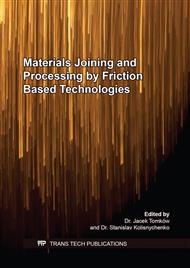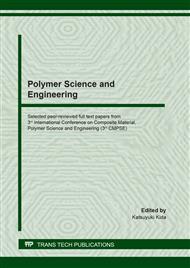p.3
p.14
p.20
p.27
p.33
p.41
p.47
p.53
Effect of Friction Stir Forming Process Parameters on Mechanical Interlock between A5083Alloy and Ultra-Thin Stainless Steel Strands
Abstract:
Fibre-reinforced materials have gathered attention because of their significant properties such as heat resistance, abrasion resistance and specific strength. The present study proposes a new method of joining stainless steel strands with an aluminium alloy using friction stir forming and analyses the formation of a fibre-reinforced aluminium alloy composite material. Mechanical interlocks between the strands and the aluminium alloy are evaluated based on cross-sectional microstructure observations and EDS analysis. The tensile test indicated an increasing tendency of strength by increasing the number of strands and bending tests showed that higher strength is achieved in rare bend because of inhomogeneous grain distribution after friction stir forming (FSF).
Info:
Periodical:
Pages:
27-32
Citation:
Online since:
August 2020
Price:
Сopyright:
© 2020 Trans Tech Publications Ltd. All Rights Reserved
Share:
Citation:



